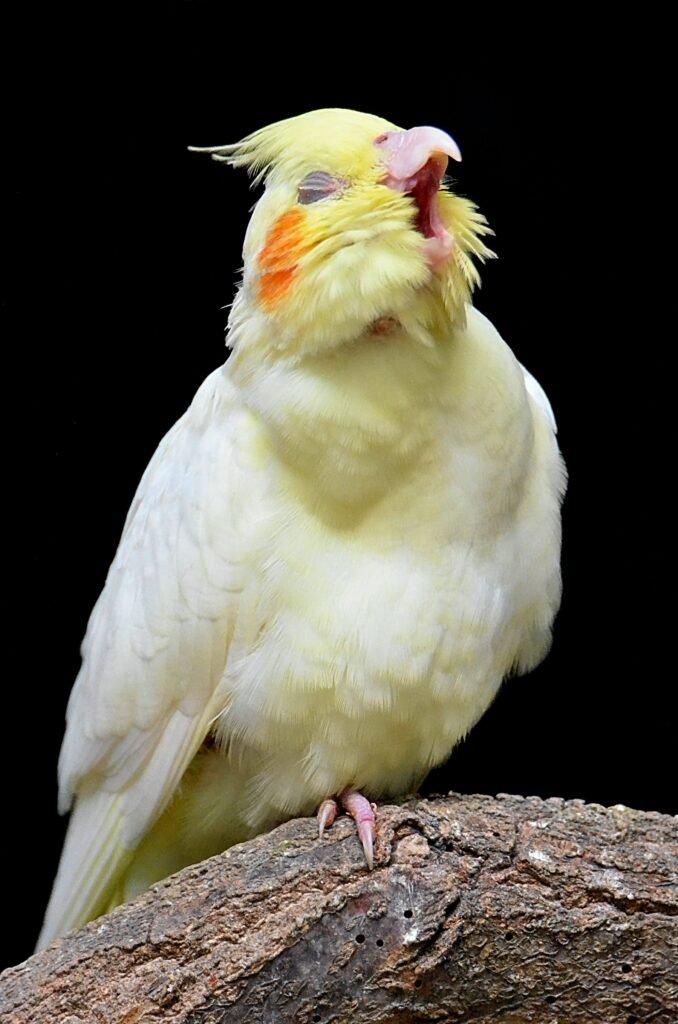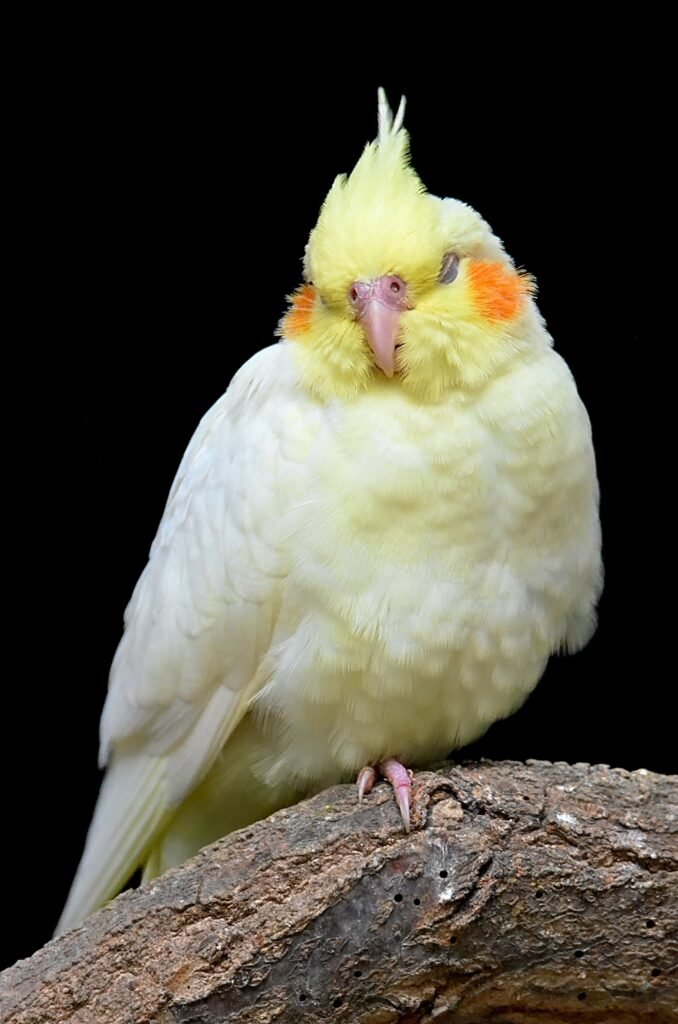 Cockatiels, with their vibrant feathers and cheerful personalities, make popular pet birds. As a responsible owner, it’s essential to pay close attention to your cockatiel’s behavior and physical appearance. One common concern that may arise is when you notice your cockatiel appearing puffed up. In this article, we will explore the potential reasons behind this behavior, the significance of a puffed-up appearance, and what actions you can take to ensure your feathered friend’s well-being.
Cockatiels, with their vibrant feathers and cheerful personalities, make popular pet birds. As a responsible owner, it’s essential to pay close attention to your cockatiel’s behavior and physical appearance. One common concern that may arise is when you notice your cockatiel appearing puffed up. In this article, we will explore the potential reasons behind this behavior, the significance of a puffed-up appearance, and what actions you can take to ensure your feathered friend’s well-being.
Understanding Cockatiel Behavior
Before we delve into the reasons behind a puffed-up cockatiel, it’s important to understand their natural behavior. Cockatiels are known for fluffing their feathers as a way to regulate their body temperature. When they puff up, they create a layer of air between their feathers, which acts as insulation against cold temperatures. This behavior is typically seen during colder weather or when they are preparing to sleep. However, if your cockatiel is persistently puffed up, it could be a sign of an underlying issue that needs attention.
Cockatiels have delicate and sensitive respiratory systems, which makes them prone to respiratory infections and other illnesses. Additionally, cockatiels are highly social birds and can become stressed or anxious in certain situations. Changes in their environment, such as a new cage location or the presence of new pets, can trigger stress responses, leading to a puffed-up appearance. It’s important to monitor your cockatiel closely and provide a comfortable and stress-free environment to promote their well-being.
Potential Reasons for a Puffed-Up Cockatiel
Here are some possible reasons why your cockatiel may be appearing puffed up:
- Temperature Regulation: As mentioned earlier, cockatiels puff up to maintain their body temperature. If the room is too cold, they will fluff their feathers to stay warm. It’s crucial to ensure that the temperature in the room is comfortable for your cockatiel. Cockatiels thrive in temperatures between 68-78 degrees Fahrenheit (20-25 degrees Celsius). Consider using a room thermometer to maintain an appropriate environment.
- Illness or Disease: A puffed-up appearance can be an indication of illness or disease in your cockatiel. Respiratory infections, feather mites, or other health issues may cause them to maintain a puffed-up posture. It’s important to monitor your cockatiel for any additional signs of distress such as loss of appetite or weight loss, sneezing, coughing, or wheezing, discharge from the eyes or beak, decreased activity or lethargy, changes in droppings, or feather plucking. If you notice any of these symptoms or if your cockatiel appears excessively puffed up for an extended period, it’s recommended to consult an avian veterinarian for a thorough examination.
- Stress or Anxiety: Cockatiels are sensitive creatures and can become stressed or anxious in certain situations. Changes in their environment, such as a new cage location or the presence of new pets, can trigger stress responses, leading to a puffed-up appearance. It’s important to provide a warm and quiet space for your cockatiel where they can rest undisturbed. Ensure they have a cozy, draft-free area and a comfortable, appropriately sized cage with clean bedding and ample perches.
- Molting: Cockatiels go through a natural process called molting, where they shed old feathers and grow new ones. During this period, they may puff up more frequently as they adjust to changes in their plumage. Molting is a normal part of a cockatiel’s life cycle, but it’s important to ensure they have a healthy diet to support feather growth and overall well-being. Offer a balanced diet consisting of high-quality pellets, fresh vegetables, fruits, and occasional treats. Ensure a constant supply of clean, fresh water.
- Sleeping or Resting: Like humans, cockatiels need proper rest to stay healthy. When they are asleep or resting, they may puff up as a way to conserve energy and stay comfortable. Provide a warm, quiet space for your cockatiel where they can rest undisturbed. Ensure they have a cozy area with a comfortable perch and clean, soft bedding.

Signs to Watch Out For
While occasional puffing up is normal, it’s crucial to monitor your cockatiel’s behavior for any additional signs of distress. Here are some warning signs that may indicate a more serious problem:
- Loss of appetite or weight loss: If your cockatiel is not eating or is losing weight, it could be a sign of illness or disease. Consult a vet promptly.
- Sneezing, coughing, or wheezing: Respiratory symptoms can indicate respiratory infections or other health issues.
- Discharge from the eyes or beak: Any abnormal discharge should be evaluated by a vet.
- Decreased activity or lethargy: If your cockatiel is unusually inactive or lethargic, it may be a cause for concern.
- Changes in droppings: Any noticeable changes in the color, consistency, or frequency of your cockatiel’s droppings should be monitored and reported to a vet.
- Feather plucking or bald patches: Excessive feather plucking or the presence of bald patches may indicate underlying health issues or stress.
If you notice any of these symptoms or if your cockatiel appears excessively puffed up for an extended period, it’s recommended to consult an avian veterinarian for a thorough examination.
What to Do if Your Cockatiel is Puffed Up
If you observe your cockatiel appearing puffed up, here are some steps you can take to ensure their well-being:
- Check the Environment: Ensure that the temperature in the room is comfortable for your cockatiel. Cockatiels thrive in temperatures between 68-78 degrees Fahrenheit (20-25 degrees Celsius). Consider using a room thermometer to maintain an appropriate environment.
- Monitor for Other Symptoms: Keep a close eye on your cockatiel’s behavior and look out for any additional signs of illness or distress. If you notice any worrying symptoms, consult a vet promptly.
- Provide a Warm and Quiet Space: Create a cozy and stress-free environment for your cockatiel. Ensure they have a warm, draft-free area where they can rest undisturbed. Provide a comfortable, appropriately sized cage with clean bedding and ample perches.
- Maintain a Healthy Diet: Proper nutrition is essential for your cockatiel’s overall well-being. Offer a balanced diet consisting of high-quality pellets, fresh vegetables, fruits, and occasional treats. Ensure a constant supply of clean, fresh water.
- Regular Veterinary Check-ups: Schedule regular check-ups with an avian veterinarian to ensure your cockatiel’s health is monitored and any potential issues are addressed promptly.
Remember, each cockatiel is unique, and their behavior may vary slightly. However, understanding your pet’s normal habits and being attentive to changes can help you identify any health concerns and ensure their long and happy life.
Conclusion
A puffed-up appearance in cockatiels is a natural behavior for temperature regulation, but it can also indicate underlying health issues or stress. By closely observing your feathered friend’s behavior, providing a suitable environment, and seeking veterinary care when necessary, you can ensure their well-being and enhance the bond you share. Always remember that a healthy and content cockatiel is a happy one!
This article has been provided in Markdown format for your convenience.
FAQ: Why is my Cockatiel Puffed Up?
1. Why does my cockatiel puff up?
Cockatiels puff up their feathers as a way to regulate their body temperature. It helps them create a layer of air between their feathers, which acts as insulation against cold temperatures. This behavior is typically seen during colder weather or when they are preparing to sleep.
2. What are some potential reasons for a puffed-up cockatiel?
There are several potential reasons for a puffed-up cockatiel:
- Temperature regulation: If the room is too cold, they will fluff their feathers to stay warm.
- Illness or disease: A puffed-up appearance can be an indication of respiratory infections, feather mites, or other health issues.
- Stress or anxiety: Changes in their environment, such as a new cage location or the presence of new pets, can trigger stress responses.
- Molting: Cockatiels puff up more frequently during the molting process as they adjust to changes in their plumage.
- Sleeping or resting: Cockatiels puff up when they are asleep or resting to conserve energy and stay comfortable.
3. When should I be concerned about my cockatiel puffing up?
While occasional puffing up is normal, you should be concerned if you notice any additional signs of distress, such as loss of appetite or weight loss, sneezing, coughing, or wheezing, discharge from the eyes or beak, decreased activity or lethargy, changes in droppings, or excessive feather plucking. If you observe any of these symptoms or if your cockatiel appears excessively puffed up for an extended period, it’s recommended to consult an avian veterinarian for a thorough examination.
4. What should I do if my cockatiel is puffed up?
If you observe your cockatiel appearing puffed up, here are some steps you can take to ensure their well-being:
- Check the environment: Ensure that the temperature in the room is comfortable for your cockatiel.
- Monitor for other symptoms: Keep a close eye on your cockatiel’s behavior and look out for any additional signs of illness or distress.
- Provide a warm and quiet space: Create a cozy and stress-free environment for your cockatiel.
- Maintain a healthy diet: Offer a balanced diet consisting of high-quality pellets, fresh vegetables, fruits, and occasional treats.
- Regular veterinary check-ups: Schedule regular check-ups with an avian veterinarian to ensure your cockatiel’s health is monitored and any potential issues are addressed promptly.



